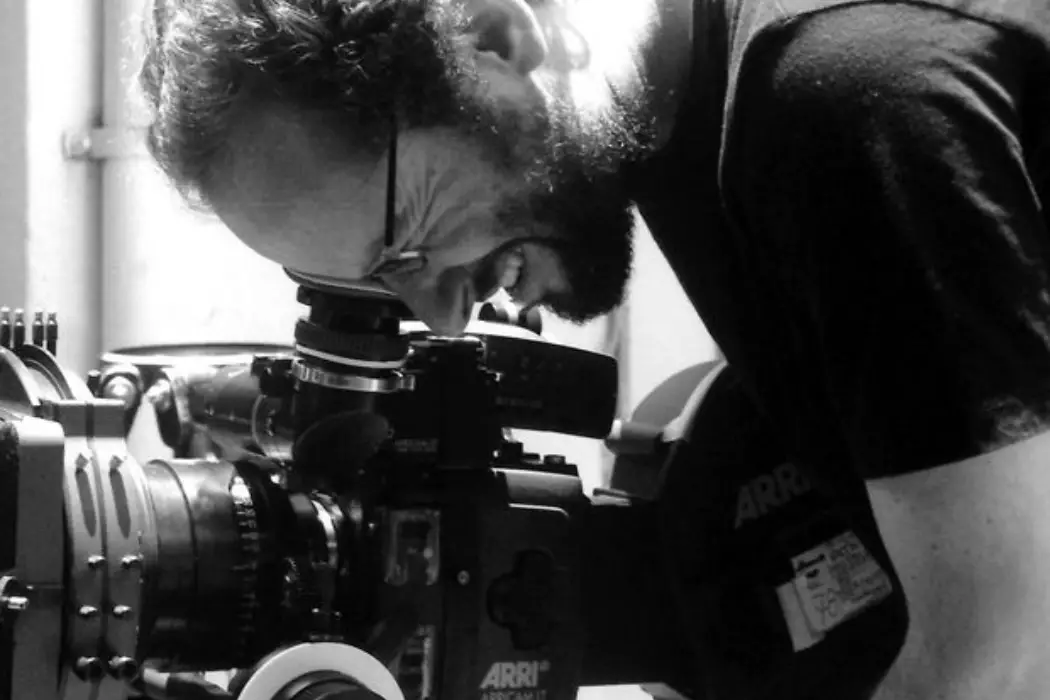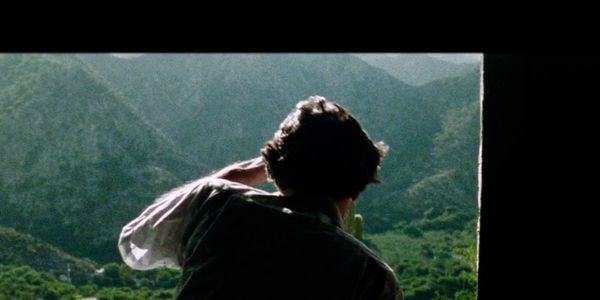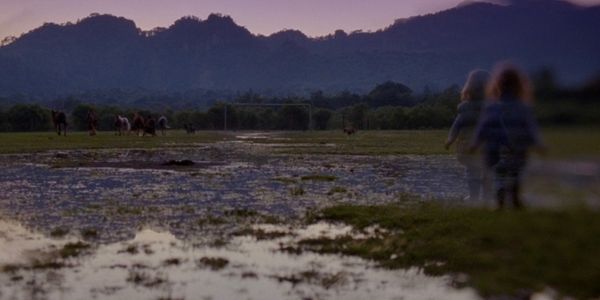The Beginner’s Guide: Carlos Reygadas, Director

Soham Gadre is a writer/filmmaker in the Washington D.C. area.…
Our purpose and fate in the grand template of the universe is possibly unknowable, but it’s the source of nearly every important work of art that has ever been made. From cave paintings to Da Vinci’s The Last Supper, to Shakespeare’s plays and Leo Tolstoy’s War and Peace, to Carl Th. Dreyer’s The Passion of Joan of Arc to David Lynch’s Twin Peaks: the Return, the self-examination of human existence through experience and the design by which our lives begin, intersect, and end, is perpetually inspiring artists of all strokes to create masterworks which stand the test of time, because in so far, human kind’s insatiable need to understand ourselves has stood the test of time.
Perhaps Carlos Reygadas’s films will never be as transcendent as the works I mentioned above are (nor should they be, in my opinion), but this is a filmmaker whose art embodies a self-examination of human existence down to the molecule of each celluloid strip. Reygadas inexorably examines human behavior in all its unsightliness, especially in the realms of sex and religion. The unflinching realism of his cinema, marked by dynamic camera movements, harsh shadows, non-actors, and unsimulated sexual encounters, is in a constant battle with the spiritual and philosophical ethos of his central characters.
Japón (2002)

Throughout his movies, the philosophical doctrine he abides by is that life, death, and sex are the primary elements which beget one’s fate. In his debut feature Japón, an unnamed suicidal man discovers new meaning in his life after meeting an enigmatic elderly woman, Ascen, who he finds a peculiar sexual attraction to. The point of intersection, signified in all Reygadas films by copulation, serves as a basis for how interactions change the direction of our fate. This mysticism which surrounds the man and woman is supplemented by the liberal use of religious imagery in the film. The harsh contrasts of light and shadow compliment the multiple dichotomies existent within the film, from the man’s existential battle between life and death to the juxtapositions of unsimulated cruel deaths of animals amidst a beautiful mountainside community which is devout in Christianity.
The prototypical Reygadas character is one whose path towards redemption almost always comes into a crossroads between his tendencies for violence and his immense sexual frustration. This is, of course, a dangerous concoction and one which often leads to uncompromising moments in the filmmaker’s oeuvre, more than one of which has rightfully garnered controversy among critics and audiences. While his debut feature Japón certainly caught attention, it was his second feature, Battle in Heaven which catapulted Reygadas into the status of enfant terrible. The film’s opening sequence is sedulous and striking. Featuring a slow, indulgent camera pan from head to toe of a pot-bellied middle-aged man being given unsimulated fellatio by a very young woman, it baits a vehement reaction.
Battle in Heaven (2005)

Filmed in high contrast, the movie’s distinct visual sense is metaphorically tied to the central theme of moral conflict. Battle in Heaven, as the title suggests, is concerned with the holy and the wretched instincts of human nature. Once again, sexuality plays a central role in how the central character Marcos, a driver for a high-ranking Mexican general, navigates his lust for the general’s daughter, Ana, and his violent self-loathing personality. Much like with Japón, here again, sex re-angles the trajectory of both characters and positions them as inverse to each other.
Violence plays a much larger role than his previous film and is a repressed urge of Marcos, synchronous to his sexual frustration. He seeks redemption from both of these burdens as a last hope, finding a street preacher who puts a cloth over his head and asks him to travel on his knees to mass. The dichotomy between the Battle in Heaven’s religious symbology with its brutal violence can be considered a direct genuine contemplation of Jungian duality, but also possesses the tone of satire of religion’s inevitable devolution into cultish ritualism. It’s unclear whether it’s one or the other, but with Reygadas, it is safe to say that’s the point. His cinema is purposefully rife with contrast, opposition, and confrontation because that is how he views reality.
Silent Light (2007)

The most unique of Reygadas’s films concentrate its realism on one of the most inconspicuous of cinematic subjects: Mexico’s Mennonite community. In Silent Light, religion is no longer a symbolic undercurrent of the characters, but quite literally a modus vivendi. For the first time, the harsh contrasts of light and shadow are replaced by much gentler tones, colors blending into each other and evoking and impressionistic beauty of the Mexican countryside. The film is much quieter than his previous entries as well, like a prayer, a confession, a release of Japón’s existential crisis and Battle in Heaven’s violent despair.
The story centers around an affair that a patriarch is having with another woman in the community. While sex is downplayed due to the standards of Mennonite traditions, it is much more passionate and brimming with emotion than the mechanical consummations of his previous characters. Everything in the movie is defined through an immense sense of guilt, love, faith, and acceptance. There is real feeling here that is shared and communicated. The sexual interactions of characters are not just significant for the participants but for the community as well. Religion, sex, death, and life are all communal in this film, and coupled with faith, leads to a greater sense of the human purpose.
The film is bookended by two long quiet sequences of a brilliant orange sun rising and setting amidst a vast expanse of Mexican farmland. Almost documentary-like and yet again featuring non-actors, Reygadas creates his most earnest film. Silent Light’s quietness and pristine beauty are like a portal in and out of an isolated haven of realism and humanity, one which helps it become perhaps Reygadas’s most thorough and complete examination of realism and humanity.
Post Tenebras Lux (2012)

By contrast, Post Tenebrax Lux doesn’t seem to fulfill any of the demands of its enigmatic and ambitious canvass. The weakest of Reygadas’s efforts, in my estimation, surprisingly comes after his most realized work and ends up revealing his ugliest tendencies while suffocating the genuine moments of benevolence, tragedy, and love that exist in short bursts. The animal abuse in the film, which exists in nearly all his movies aside from Silent Light, were considered by Reygadas as merely a result of his militant adherence to realism, and one which points out the hypocrisy of people’s repellence of the physical act of violence (animal slaughter) but an admiration of its results (food).
“Most people are very hypocritical about this — if they would see an animal being killed, they would go berserk, but they’re very happy to eat hamburgers, most of them.” – Carlos Reygadas (interview with KinoScope)
This comparison rings hollow to me because all of the sequences could be done without physical harm. The obsession of authenticity and realism when it results in suffering is something which needs to be answered for, and frankly, does not have any adequate justification that I can think of. It’s not surprising then that the best sequences in the movie are ones of unscripted chaotic joy from and the always-reliable opening sequence featuring a young girl frolicking in a field with horses and dogs to a team huddle and rugby match between two groups of private school boys in England.
The film was resolutely heckled at Cannes and then presented an award, which is par for the course for the festival. While Battle in Heaven was the most conventional plot-driven and by my own admission the most entertaining and watchable of his movies despite its disturbing nature, Post Tenebras Lux is sans plot, and a movie inspired heavily by Reygadas’s life and his instincts as a filmmaker. Which makes it more surprising that the issue of the film was not its self-indulgence, but that none of it amounted to much.
Despite this, Carlos Reygadas maintains a unique eye for filming the world. What may have not come to fruition in Post Tenebras Lux, certainly bloomed in his other three films. Reygadas is uncompromising and wholly compassionate towards his viewers in shifts, and he need not make any apologies for that. He is also proudly Mexican. Like his contemporary and fellow countryman Alfonso Cuarón, his meditations can be proudly esoteric when they must be. His latest movie, Our Time, will surely continue the traditions of a filmmaker who examines the intersection of life, death and sex as doggedly as than any other.
Does content like this matter to you?
Become a Member and support film journalism. Unlock access to all of Film Inquiry`s great articles. Join a community of like-minded readers who are passionate about cinema - get access to our private members Network, give back to independent filmmakers, and more.
Soham Gadre is a writer/filmmaker in the Washington D.C. area. He has written for Hyperallergic, MUBI Notebook, Popula, Vague Visages, and Bustle among others. He also works full-time for an environmental non-profit and is a screener for the Environmental Film Festival. Outside of film, he is a Chicago Bulls fan and frequenter of gastropubs.













